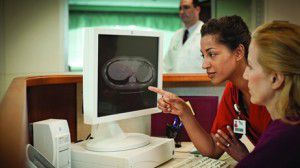Background:
Bone Marrow Aspirate Concentrate (BMC) has materialized as a significant and important autologous biological means in health care therapeutic strategies. The use of biologics for tissue repair and regenerative processes are still at its infancy when compared to surgical interventions and pharmaceuticals. However, autologous biologic therapies are rapidly becoming an integral part of Modern Therapeutic Medicine (Figure 1).

At present, BMC is one of the few biologics that's capable of delivering mesenchymal stem cells (MSC), progenitor stem cells, cytokines, and other regenerative cells, to patient treatment sites, at point of care. In addition to this, it is now proven and documented that products such as PureBMC® can deliver all of these cell types plus a significant amount of growth factors as well. The potential of mesenchymal stem cells (MSCs) to transdifferentiate into various mesenchymal derived tissues has generated a profound interest in its treatment for musculoskeletal, trauma, orthopedic and spinal conditions. It is therefore not a surprise that the number of autologous BMC procedures are incrementally increasing each year. Nonetheless, more information is needed, for us to fully understand how the final BMC injectate may affect clinical outcomes. Think plasma free hemoglobin and its hemolytic impact on the local tissue environment.
But first a little refresher: BMC Composition
The BMC composition has been analyzed with a variety of methods and in different settings. Techniques for analyzing the bone marrow biologic include flow cytometry and light microscopy. The composition of bone marrow is dynamic, containing a mixture of cellular and non-cellular components (connective tissue). Gender and age contribute to compositional differences in cellularity, when analyzing and quantifying regenerative cell indicators, like CFU-F's, in bone marrow [2].
Hematopoietic constituents:
The main functional component of bone marrow includes distinctive progenitor cells which mature into blood and lymphoid cells. Hematopoietic stem cells produce erythrocytes, granulocytes, macrophages/monocytes, lymphocytes and platelets, through hematopoiesis [3].
Marrow stromal cells:
The marrow stroma consists of a heterogeneous population of cells (e.g. fibroblasts, adipocytes, osteoblasts, osteoclasts, macrophages, and endothelial cells) that are not directly involved in hematopoiesis. They provide structural and physiological support for hematopoietic cells. Additionally, these cells contain a stem-cell-like character that allow them to differentiate into bone, cartilage, and adipocytes. Furthermore, they provide a microenvironment (niche) that supports the differentiation of hematopoietic cells.
Mesenchymal cells:
Mesenchymal cells are multipotent adult stem cells that are present in bone marrow stroma and other tissue types. MSCs can be also identified as specialized populations of mural cells/pericytes. They provide a niche for HSCs and have the ability to differentiate into various mesodermal lineages. Furthermore, MSCs have fascinating immunomodulatory properties, leading to an expanded interest for various therapeutic applications [4]. Among others, Pittenger and associates, in 1999, published on the composition of bone marrow aspirate (BMA) and concluded that the percentage of MSC's in BMA are relatively low (0.001 to 0.01 % of nucleated cells). Their recommendation was to increase the concentration of MSC's, using centrifugation technology, to ultimately produce BMC [5,6]. Many laboratory, animal, and human studies confirm the ability of increasing the MSC's in BMA, using centrifugation techniques. They are measured as Colony Forming Units of fibroblasts (CFU-f).
Hemolysis and plasma free hemoglobin
Standard factors that determine the quality of BMA are cell viability and progenitor cell content, sometimes measured as TNC, CFU-F and CD34+. It is recommended to performed these tests regularly, as a quality control measure. Surprisingly, in the literature, no attention has been given to the hemolytic quality of the BMA and bone marrow concentrate (BMC) product. The biological milieu of bone marrow contains high levels of RBCs. Typically, the BMA aspiration procedure causes some level of hemolysis based on the aspirating technique and BMA needle design. BMA hemolysis is a result of the destruction of the RBC cell membrane with the release of free hemoglobin (heme) and iron into the BMA sample. Free hemoglobin is profoundly oxidative and highly inflammatory. They are toxic to the vasculature because of its oxidative effects on the endothelium. Plasma free hemoglobin causes the consumption of nitric oxide, which can lead to serious clinical consequences. Nitric oxide is a key player in vascular haemostasis and regulator of vasomotor tone, endothelial adhesion, and platelet activation and aggregation [8]. In the normal human circulatory system, destructive free hemoglobin and its by products are controlled by a protective compensatory mechanism that transport them to the liver by hemopexin, by which they are degraded through heme oxygenase into carbon monoxide, biliverdin, and iron. Under these conditions the human body will respond to the presence of free hemoglobin by protective hemoglobin-scavenging mechanisms.
Hemolysis and Bone Marrow Aspirate/Concentrate
With plasma free hemoglobin in the BMA or BMC injectate, no protective hemoglobin scavenger, or nitric oxide mechanisms are in place. There are no homeostatic compensatory mechanisms in the BMA sample. The plasma free hemoglobin that entered into the bone marrow aspirated volume will remain. This will subsequently cause profound oxidative and inflammatory processes in the locally injected tissue and vasoconstriction leading reduced local blood flow (a result of depleted nitric oxide). Furthermore, from in-vitro studies, it is clear that hemolysis with critical levels of free hemoglobin might result in inflammatory infiltrates, and induction of neutrophil activation and migration. In short, BMA and BMC injectates with high levels of free hemoglobin contain no compensatory mechanism to clear the toxic hemolytic substances, and the profound pro-inflammatory condition, with ensuing consequences, remain present in the injectate given to patients. The literature with regard to BMA/BMC application does not address the hemolysis phenomena. The fact exist that these toxic substances may promote inflammation, inhibit circulation, and destroy local tissue through an oxidative process.

The plasma portion of the BMC is red tinged instead of clear yellow, indicating the presence of free hemoglobin caused by hemolysis. From: Weel, et al. in The effect of concentrated bone marrow aspirate in operative treatment of fifth metatarsal stress fractures; a double-blind randomized controlled trial.
The ASPIRE™ Bone Marrow Harvesting System
EmCyte Corporation has several ongoing BMC studies with extensive laboratory analyses to quantify the cellular contents of the new ASPIRE™ Bone Marrow needle. The key cellular data points collected, in addition to the normal progenitor cell population, are viability and plasma free hemoglobin. The concept and objective of this proprietary BMA needle design is to acquire a high quality BMA aspirate with minimal trauma to the cellular components. This provides a better, safer and more effective baseline biologic for BMC processing. The needle stays in line with the philosophy of of EmCyte products, which is to provide a pure product devoid of inflammatory toxic contaminants.
The unique ASPIRE™ needle design facilitates the collection of high concentrations of total nucleated cells, CD34+ cells, CFU-f, and platelets. Conventional Ranfac BMA needle provide a preliminary hemolysis data range of 8-19% when analyzed at the BSR lab in Cambridge MA. By comparison, the ASPIRE™ Bone Marrow needle provide a preliminary hemolysis data range of 3-8%. After PureBMC® preparation of that sample the hemolysis range percentage range significantly decreases even further. This provides a pure and clean BMC sample without the toxic impurities found in conventional BMC. The sample is fundamentally and clinically safer for the injected tissue environment.
What's your position
Do you think that we should add hemolysis control parameters when analyzing bone marrow concentrate to better establish the quality and safety of the injectate? Do you feel comfortable injecting a cocktail of bone marrow cells potentially containing pro-inflammatory and pro-oxidant components in discs, joints, tendons or muscles?
References
- A new technique for hemodilution, preparation of autologous platelet-rich plasma and intraoperative blood salvage in cardiac surgery. Int J Artif Organs. 1987 Jan;10(1):47-50. Ferrari M, Zia S, Valbonesi M, Henriquet F, Venere G, Spagnolo S, Grasso MA, Panzani I.
- Age- and gender-related changes in the cellularity of human bone marrow and the prevalence of osteoblastic progenitors. J Orthop Res. 2001 Jan;19(1):117-25. Muschler GF1, Nitto H, Boehm CA, Easley KA.
- Niche heterogeneity in the bone marrow. Ann N Y Acad Sci. 2016 April ; 1370(1): 82–96. Birbrair A, Frenett P.
- Bone marrow mesenchymal stem cells: biological properties and their role in hematopoiesis and hematopoietic stem cell transplantation. Stem Cell Rev. 2011 Sep;7(3):569-89. Pontikoglou C, Deschaseaux F, Sensebé L, et al.
- Multilineage potential of adult human mesenchymal stem cells. Science 1999; 284: 143-147. Pittenger MF, Mackay AM, Beck SC, et al.
- Isolation and characterization of multipotential mesenchymal stem cells from feline bone marrow. Exp Hematol. 2002; 30: 879-886. Martin DR, Cox NR, Hathcock TL, et al.
- Biopsy needle advancement during bone marrow aspiration increases mesenchymal stem cell concentration. Peteres A, Watts E. Frontiers in Vet Science. 2016; 3: Article 23.
- The clinical sequela of intra vascular hemolysis and extracellular plasma hemoglobin. A novel mechanism of human disease. JAMA. 2005; 293: 1653-1662. Rother R, Bell L, Hillmen P, Gladwin M.
- Benefits of small volume and small syringe for bone marrow aspirations of mesenchymal stem cells. Intern Orthoped. 2013; 37: 2279-228. Hernigou, Homma, Lachaniette, et al.
- Hemolysis and free hemoglobin revisited: exploring hemoglobin and hemin scavengers as a novel class of therapeutic proteins. Blood 2013; 121: 1276-1284. Schaer D, Buehler P,. Alayash A, et al.
- Hemolysis in Cardiac Surgery Patients Undergoing Cardiopulmonary Bypass: A Review in Search of a Treatment Algorithm. JECT 2008; 40: 257-267. Vercaemst L.
- Erythrocyte Hemolysis and Hemoglobin Oxidation Promote Ferric Chloride-induced Vascular Injury.J Biological Chem 2009; 284; 13110-13118. Woollard K, Sturgeon S, Chin-Dusting J, et al.
Posted on 02/02/2018 at 11:01 AM












